
A multimedia soirée with Pierre Joris and Nicole Peyrafitte weaving, braiding their individual and shared travails.
Joris/Peyrafitte @ Poetry Project NYC



A multimedia soirée with Pierre Joris and Nicole Peyrafitte weaving, braiding their individual and shared travails.

 On October 28 2023 I lead a Sympoietic Walk/shop thru Constitution Marsh. We were blessed by a sunny, warm, gorgeous fall day. I left Brooklyn at 7am and after a smooth ride among the fall foliage along Palisades Parkways I arrived early as I wanted to take in the marsh before the group gathered. I was greeted by a dozen wild turkeys, and shortly after by the lovely Lucy Oakes, the Educator-Naturalist of Constitution Marsh. Our group of participants gathered on time in the exhibition room, where a large screen showed my short slide-show introduction before walking up to the trail and embarking on our silent walk. Below is a summary of my presentation and my report of the day.
On October 28 2023 I lead a Sympoietic Walk/shop thru Constitution Marsh. We were blessed by a sunny, warm, gorgeous fall day. I left Brooklyn at 7am and after a smooth ride among the fall foliage along Palisades Parkways I arrived early as I wanted to take in the marsh before the group gathered. I was greeted by a dozen wild turkeys, and shortly after by the lovely Lucy Oakes, the Educator-Naturalist of Constitution Marsh. Our group of participants gathered on time in the exhibition room, where a large screen showed my short slide-show introduction before walking up to the trail and embarking on our silent walk. Below is a summary of my presentation and my report of the day.

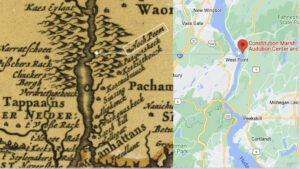
Presentation material & background:
I like to take the term Sympoiesis —or “making-with” — quite literally, so while researching how to present what I thought would be a meaningful land acknowledgment I came across a 1685 map that listed in detail the native tribes of the area.
 I shared the map with poet Mary Newell, who lives in the area, had introduced me to Constitution Marsh & attended the walk. As we exchanged information around the area Mary shared the land acknowledgment suggested to her by Evan T. Pritchard, a Micmac scholar and author of the must-read book, Native New Yorkers : The Legacy of the Algonquin People of New York.
I shared the map with poet Mary Newell, who lives in the area, had introduced me to Constitution Marsh & attended the walk. As we exchanged information around the area Mary shared the land acknowledgment suggested to her by Evan T. Pritchard, a Micmac scholar and author of the must-read book, Native New Yorkers : The Legacy of the Algonquin People of New York.
“I acknowledge the former inhabitants of this land, the Nochpeem ( a “misty place” sachemdom (nation) of the Wappingers Confederacy, especially the Kestkistkonk people, (prominent sun mountain / principle place near the mountains) who cared for the land around what is now Garrison. I honor their enduring presence and their descendants and emulate their ways of enacting a vital connection to the living earth”
Geological Information:
Even though it was just a quick overview of the geological layout of the region, I wanted to convey a sense of how ancient this land formation is. Constitution Marsh is part of the Hudson Highlands State Park. The bedrock of the Highlands is part of the Reading Prong and more than a billion years old, formed during the Grenville Orogeny. It represents the very core of the Appalachian range, which has been formed by successive mountain-building events (orogenies). The Grenville orogeny was a long-lived Mesoproterozoic mountain-building event associated with the assembly of the supercontinent Rodinia. I have long been fascinated looking at formations that not only pre-date our current earth configuration, but three “shapings” before ours! Also shown on the map is the appearance of fauna & flora, including us in the upper right edge — and not to scale!


I concluded the short presentation with a few words about the Hudson River, basically reading the slide below. I will expand here on my relationship to the river: I have lived in New York State since 1992 and always close to the River. From 1992-2007 in Albany, N.Y.; then in 2007 I moved to Bayridge, 5 blocks from the Verrazano Narrows and now, since 2009, to a place looking directly at the Narrows. Looking at rivers is always potent and mesmerizing. I grew up at the foot of the highest Pyrenean mountain peaks, and as a child I was spellbound by the streams rushing through my hometown. These loud, powerful streams came from all the way “up there,” i.e., the high mountains weighing down on us and rushing to the Ocean… To the sea! At that time the sea felt so faraway and the rivers’ journey triggered profound feelings of speed, motion and possibilities. Gazing intensely at currents pulled me in, but at the same time out of, what I felt was, a very claustrophobic upbringing & geography. When we would travel to the big town of Toulouse, by car or train, and would cross or drive along the river Garonne, I would ask my mother if it was the same river as “ours”, and she would answer: “Yes! It is, but many tributaries feed it along the way.” To this day I still have vivid memories about carefully drawing all tributaries of the Garonne on my geography notebook in elementary school and grasping that “we” were at the beginning of its 529km (329 miles) journey gave me an insight that never left me.

The goal of the walk was for everyone to grasp, receive and make-with this majestic environment, or in other words: to “apprehend” the more-than-human locale in the first etymological sense of the word which is “grasping with the senses or the mind”.
The Walk:
Off we went. My response-ability as the group leader was severalfold. First, to be mindful of the safety of the group. As I mentioned above, our walk was going to be silent, unless there were emergencies. We were a small group and decided to stay together until we reached the boardwalk. Lucy walked out front and I closed the walk. We would point out birds or communicate by simple eye contact & facial expression. Once we reached the boardwalk some of us waded thru the marshes, while others stayed on benches and drew, painted, looked at samples of plants, took photos. I noticed everyone settled with some silent activities so I proceeded to make the full round of the boardwalk, knowing I would get wet. In some areas the water was halfway up my calves so I got wet but didn’t mind.


Walking slowly and mindfully through the flooded marshes during peak high tide brought a tranquil internal force. This potent sensation was generated by the Atlantic Ocean’s upstream influx and at the same time by the mighty stream coming down from the Adirondacks. As the tide is felt all the way to Troy NY, the Native names reveal these movements: one Iroquois name is Cahohatatea, “river that comes from the mountains” — most likely above Troy; then it becomes Muh-he-kun-ne-tuk for the Mohicans, Shatemuc for the Lenape of Manhattan and both these names means “river that flows both ways.”
So here I was walking among alevins, varieties of fading and decaying vegetation, above and around crows, a great blue heron, a great egret, cormorants, and many other birds slicing thru the blue sky, all accompanied by the sound track of the gentle breeze thru the cattails and on occasion a very loud intrusion by the Amtrak train and, even more intrusive, the echo of West Point Academy testing out their mikes for whatever event was about to start. I practiced keeping the internal tranquil force, treating the “disturbances”as part of the sympoiesis of the moment.


I returned to the group & before hiking back to the center I pulled out my traveling drum & oyster shells for a moment of tuning & toning together. I like bouncing the shell on the drum, I don’t know if it is an ancient custom or not but I started doing it when I played the drum for Betsy Damon’s performance a couple of years ago. Betsy, a very early eco-feminist activist, taught me a lot about water. Every collaboration or visit with her is a teaching moment. In her book Water Talks she writes: “Creativity is an ever-flexible, expansive process available to everyone — not only all humans, but also the entire living universe.” And during lectures and conversation she often repeats: “listen to the water,” “water is our teacher.” So bouncing the shell on the drum becomes a very organic drumming experience, which I can’t really describe. All I know is that the experience integrates my body and my mind the way my Karstic-Actions do (see the Karstic-Action “Be Like Water” here.) I passed the drum around and before we knew it we were all engaged in some drumming or, clapping, dancing in a round, deep breaths in, deep breaths out….all self generated organic movements. We then gathered and took the trail again, still mostly in silence.
Back:
Once we reached the Audubon Center, we regathered around the table after a little personal break and one after the others we shared our experiences.
I am encouraging the participants to write their own accounts (please send it if you want me to publish it or write in the comment box) as I certainly don’t want to speak for them. However, I have a sense from what came out of the conversations that the experience was positive. Remaining silent during the walk was mentioned and appreciated as a factor of switching the energy and allowing a different focus. It does, and it allows to make other sensorial connections that are by-passed by the constant use of language. They also mentioned that they “touched more.” By by-passing language, physical presence & gaze become different. May I suggest that they become literately more mindful? But this is for another essay and to be continued.
I am very grateful to the Constitution Marsh Audubon Center and Sanctuary to have given me this opportunity. Thank you, Rebecca Schultz (director) and Lucy Oakes (Educator-Naturalist and our gracious hosts), Mary Newell who introduced me to the Marsh and last, but certainly not least, to the spirited participants. Their genuine, sympoietic engagement & contribution allowed us to become–with and -through each other.
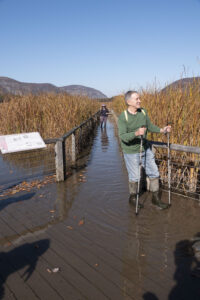
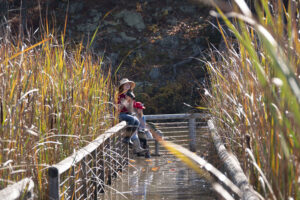





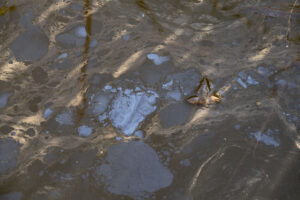



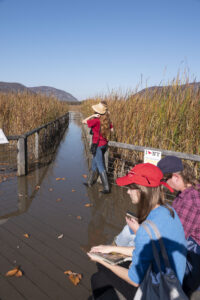
Watching the tide rise
Art work and photos by participants


Lucy’s Photos

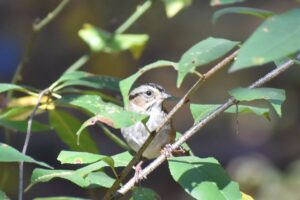





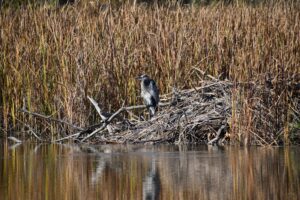
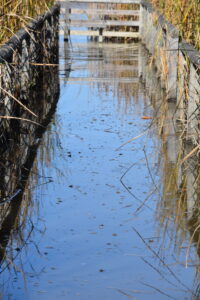


I am thrilled to be included in this wonderful group show at Sapar Contemporary.
Women and Other Wild Creatures: Matrilineal Tales
June 3, 2022- July 15, 2022 —extended to August 26
Opening reception Friday June 3, 6-8pm
9 NORTH MOORE, NEW YORK, NY 10013
Yes! that is tomorrow! — or today if you open this in the morning!
So much looking looking forward to see you; it’s been too long!
Zinaida (Ukraine), Iryna Maksymova (Ukraine), Rita Maikova (Ukraine),
Kateryna Babkina (Ukraine), Aya Shalkar (Kazakhstan/US),Yerke Abuova (Kazakhstan/US),
Nicole Peyrafitte (France/US) and Susan Coyne (US).

Featuring installation + Video Antediluvian Sympoiesis
pdf of installation: here
Sapar Contemporary is thrilled to present Women and Other Wild Creatures: Matrilineal Tales, a group exhibition of women artists who draw strength from the connection with the non-human nature, involving it in their healing practices and increasingly fantastical visions of human unity with nature. The show includes artists from Ukraine (Zinaida, Rita Maikova, Iryna Maksymova, poet Kateryna Babkina) and Kazakhstan (Aya Shalkar and Yerke Abuova), representing the gallery’s DNA, as well as works by French (Nicole Peyrafitte) and American (Susan Coyne) artist.
The inspiration for the exhibition came from seeing intergenerational caravans of grandmothers, mothers, daughters, and family pets migrating from the war zones, as well as the images of nature’s destruction in Ukraine: suffering trees, plants, animals of all kinds, and the whole steppe and wetland ecosystems – in addition to cultivated land. These images have been deeply felt at the gallery whose founders have family, friends, artists, and roots in Ukraine. The sense of terror brought to mind sources of strength available to women, connections that they forge across time and space, rituals recovered and re-invented in times of cataclysms. Ukrainian poet, Kateryna Babkina, contributed a poem she has written in March 2022, which was translated in English by Virlana Tkacz and Wanda Phipps for the exhibition. The poem opens with a line: Give me a brother who can protect me; woman is seeking protector and shelter, the sky responds with the final line of the poem: Make it yourself. You are on your own.

Wishing you a smooth, loving & healthy flow in 2022 despite the complexities we are all going through these days.
So, onward into the new year & on January 1st, I performed a new Karstic Action: Be Like Water (video below) for the Poetry Project’s 48th Annual New Year’s day Marathon. My three minute performance was live streamed at around 7:30PM EST. The piece is dedicated to artist Betsy Damon. Back in October I was privileged to perform a sound scape I created for her performance Listen, Respect, Revere presented at La Mama Gallery during her solo show PASSAGES: RITES AND RITUALS curated by Monika Fabijanska. Betsy’s radical performance practice from the 70s & her relentless worldwide eco-activism inspires, energizes, & prompts action. Hence the Karstic-Action Be Like Water, a performance precipitated by the proximity of great water in my close environment. I have lived on the shore of Shatemuc since 2007 (in Bayridge, Brooklyn) & before that on the shores of Mahicanituck (Albany, NY 1992-2007). Different names for the same river, whether it is the Mohican’s name upstream or the Lenape’s name downstream, the meaning remains the same: “the river that flows two ways,” — thus not just a river, but a tidal estuary, an arm of the sea where salty seawater meets fresh water running off the land. Today we call her Hudson River, after the English navigator Henry Hudson who in 1609 sailed the “Halve Maen (Half Moon),” a Dutch East India Company three-masted flyboat, upstream to Pem-po-tu-wuth-ut or Sche-negh-ta-da, today Albany, NY
These waters, these lands had long been navigated & populated by native peoples— for at least 10 000 years. But what is left of the 9500 years of these rich & complex layers of life, history, culture? Karstic-Action Be Like Water was broadcast from my studio in Bay Ridge — in the southwest of Brooklyn, located on a terminal moraine created by receding glaciers around 13,000 years ago along the Verrazano Narrows. This land belonged to the Lenape people & there is local evidence of their dwelling here since 4500 BC. The Lenape belong to the Algonquin civilization & spoke Munsee. Given their predominantly oral culture, early written documents are rarely accurate as they come to us from the first colonizers who knew neither their culture nor their language. Like the other Natives, the Lenape have been dispossessed, displaced, practically exterminated. The colonizers also usurped & changed the names of rivers, valleys & mountains which in their languages had held important geographical & linguistic information. From the beginning on the European infiltration started to obliterate the ecological equilibrium of their sustainable land- & water-based environment. Before Henry Hudson, the Florentine Giovanni de Verrazano visited the narrows in 1524, sent by the French king, François 1er. A Brooklyn Eagle article from 1911 reports that graves have been found on the Bliss Estate, or what’s now called Owl’s Head Park. “This is known as Indian Mound, for here Indian relics and bones have been found.” This mound —part of the moraine mentioned above, is my neighborhood park & I visit it almost everyday when I am in Bay Ridge.
Karstic Action: Be Like Water is the distillate of the geological, historical, environmental information I acquired over the years, succussed into a 3-minute performance. This work is in the lineage of the KARSTIC-Actions Paintings open-ended series of live performances I started in 2011. They explore proprioception (sense of body position) & kinesthesia (sense of body movement), as meeting points between painting, poetry, voice, music, ecology, geology, history. “Karstic” refers to the geological phenomena of dissolution & transformation at work in the formation of superficial or underground limestone topographies. By a similar principle of infiltration, language transforms into poem, breath into song and colored chalk become pastel into marks on paper or canvas. Always “in/quest of” equilibrium through an ecological consciousness in the literal meaning of that term: greek οἶκος / oîkos/ house, household, dwelling & λόγος / lógos/ discourse, thus science of dwelling.
The sound track was pre-recorded (recording & mixing courtesy of Miles Joris-Peyrafitte) to allow me to focus on the physical performance aspect. The text is an assemblage of the “Mahicanituck” song written for the performance “The Bi-Continental Chowder” in the early 2000s & of a second part written over the past week. The background of the live painting is a sheet of paper used as a floor covering & saved from a 2015 action painting. The pigments were a mixture of chewed charcoals burned in the fireplace of our house in my native Pyrenees, pure calcium carbonate (calcite), Ercolano red, terre verte Brentonico, Chefchaouen blue, French clay, bauxite de Tourves, sand from the Narrows; all mixed with water & applied with the feet while in headstand (Salamba Sirsasana II).
Text:
Be Like Water
for Betsy Damon on New Year’s day 2022
Mahicanituck, Shatemuc
from lake Tear of the Clouds
she flows & grows
& grows & flows
to meet the Atlantic Ocean at the Verrazano Narrows
Mahicanituck, Shatemuc
great water constantly in motion
great water that flows two ways
they call you Hudson today
we cannot drink your water anymore
we cannot eat your fish or oysters anymore
we cannot swim from your shores anymore
but Mahicanituck, Shatemuc
I feel your flow
I feel your flow
I hope less
feel flow
hope less
feel flow
feel flow
my hydrological cycle
primeval waters
primordial oysters
salty waters
fresh waters
with the bonobos following the Congo trail
waking wading dwelling from canopy to water
defying that water was “ubered” by an asteroid or comet
but steamed out 4.3 billions years ago
hope is not a strategy
hope is a belief
water was already here
immanent not transcendent
the crucible of non-living & living worlds
feel flow
feel flow
feed flow
feed flow
On the menu du jour: life’s origin
serving primordial soup
on original sea bed
paired with
water to restore the
intimate relationship with life
feel flow
feel flow
Mahicanituck, Shatemuc
great water constantly in motion
great water that flows two ways
we grow & flow
& flow & grow


KARSTIC ACTIONS/WORKS: DOCUMENTATION
From June 4th — July 15, 2021 Galerie Simoncini —Luxembourg, presented the second extensive installment of Nicole Peyrafitte & Pierre Joris’ Domopoetics creations. The couple, who has shared life for three decades, moved in with their most recent KARSTIC ACTIONS/WORKS —paintings, texts, videos — & occupied the three levels of the gallery.
— On the ground floor, the Karstic Refuge where their domestic & political processes interconnect & transform.
— In the basement, the Sanctuary, neither holy nor secret, but table/altar for their intimate domopoetic works.
— On the second floor, the Canopy, where the diversity & resilience of multi-species relations can be experienced.
For the opening & the finissage live Karstic-Action performances were presented. Below are the two videos:
OPENING: Friday, June 4th at 6:00PM with an improvisation of Pascal Delalée on violin
FINISSAGE: July 15 2021 with Colin Toniello on keyboard
VIDEOS on displayed at the gallery:
ResistPersistAssist -2020: https://vimeo.com/477008625
Nicole Peyrafitte -VOTE!-2020: https://vimeo.com/473998922
Pierre Joris -VOTE Manifesto-2020: https://youtu.be/o2cL2mj7bu8
Dé-Suffire/De-Suffice -2020: https://vimeo.com/443524314
Manifesto -2020: https://vimeo.com/manage/videos/492536015
Altars of Light -2006: https://vimeo.com/43001870
KINGSTON Karstic-Action 2020: https://vimeo.com/389405431
PRESS RELEASES:
English
French
POSTER:
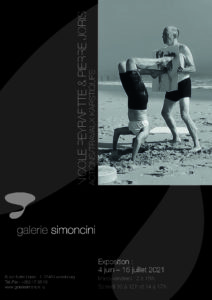
INVITATION:

